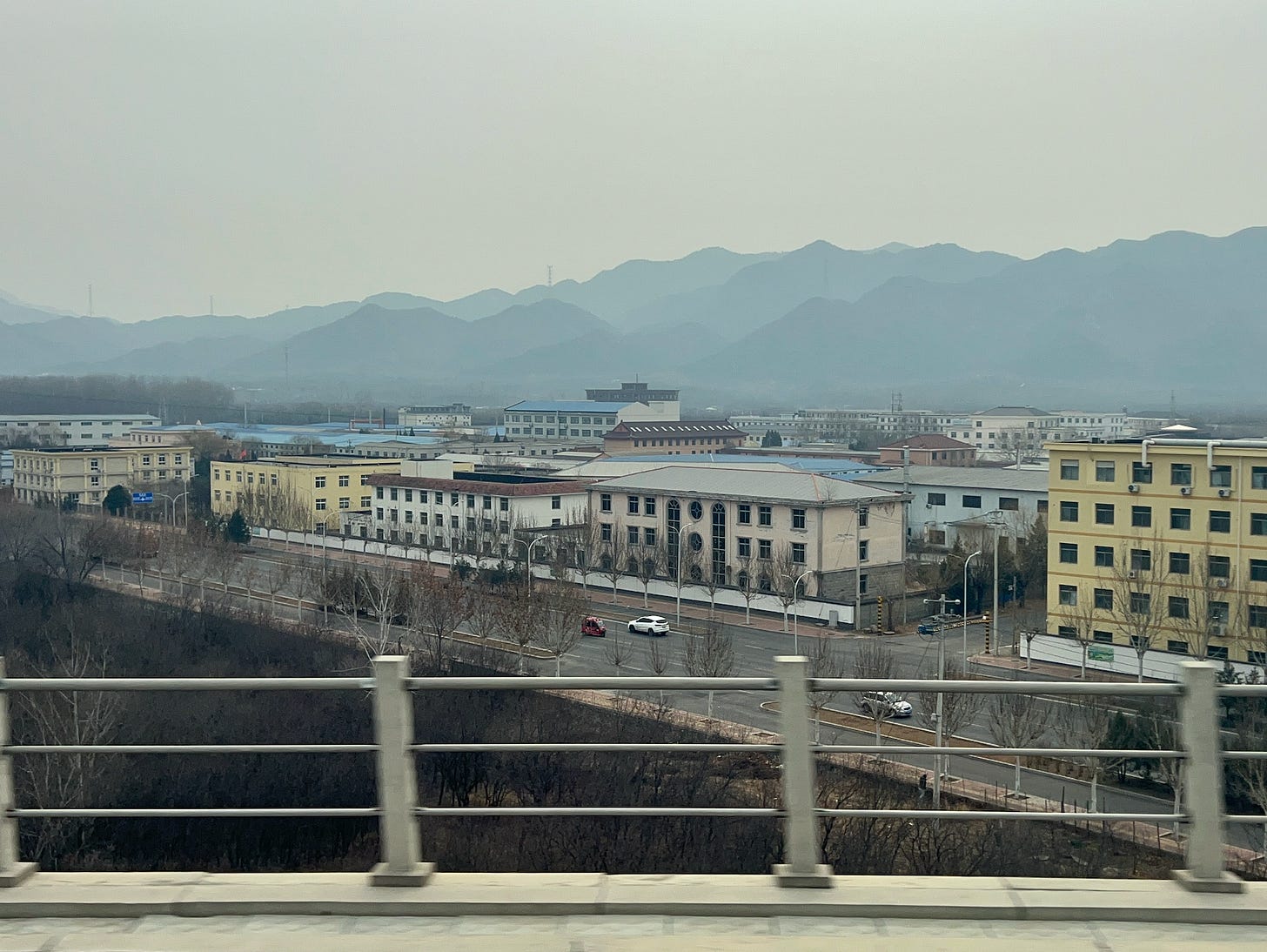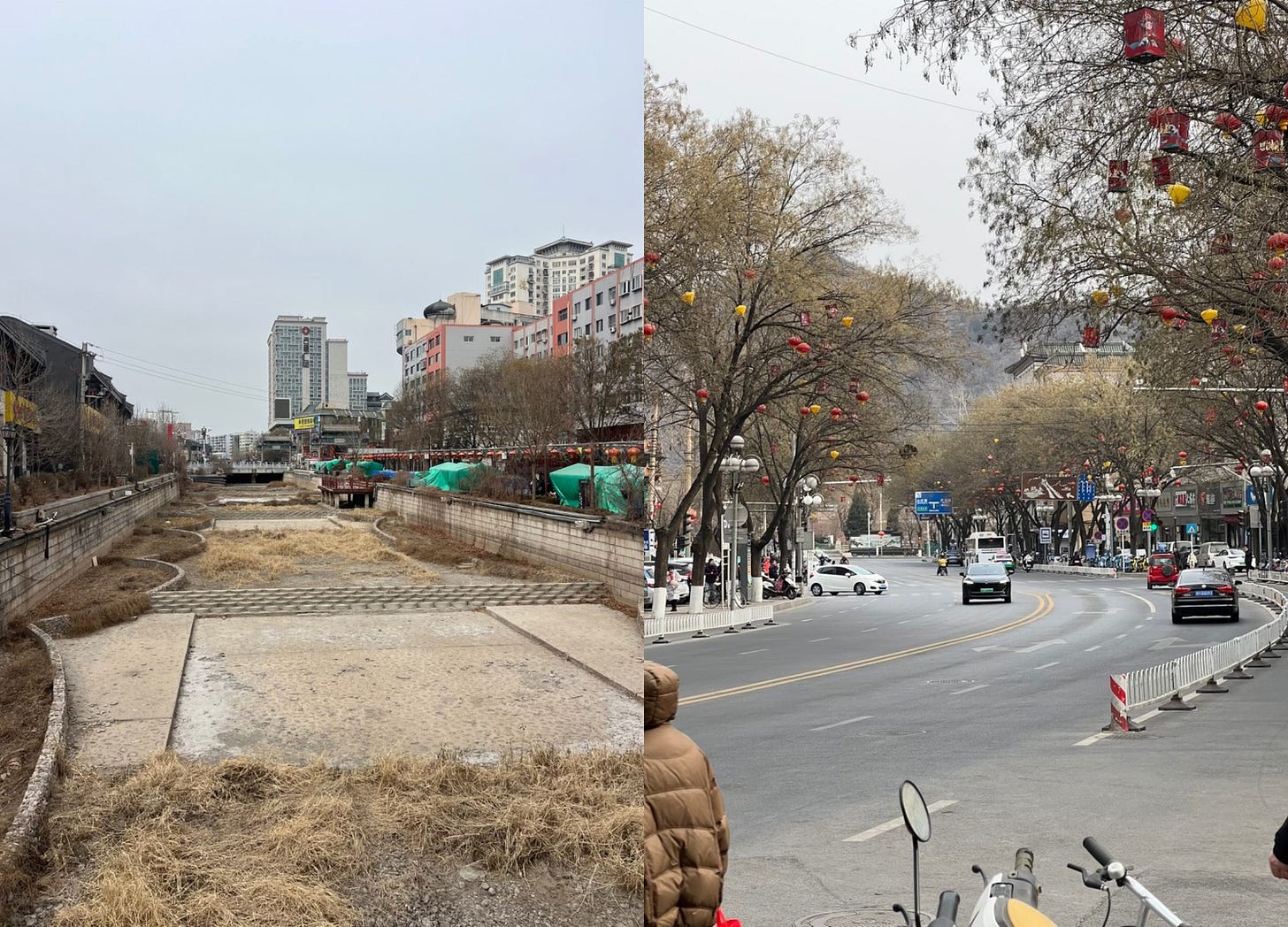S1, E5 | A Trip to China's Remote Mountain Resort
A day trip to Chengde, 225 km northeast of Beijing
I guess I’m a “half” travel blogger now :). While I love writing essays about personal growth and all that, there has always been a side of me - the geographer and adventurer - that has always been keen on sharing my explorations. So this newsletter, with the recent rebrand of “The Grand Tour 2.0,” will be divided into primarily 2 parts. You can learn more about my life philosophy from this essay.
I’m very behind on all my public travel diaries. For the past month, I’ve been embodying the “Grand Tour 2.0” philosophy to the fullest: always nomadic and on the move, going on weekly day trips outside of Beijing as I’m learning more and more about this beautiful country. But there’s zero limit on how many places I can visit, which makes this experience so much more exciting.
In the span of several weeks, I’ve visited Tianjin, Chengde, Jinan, Zhangjiakou, Cuandixia, and Datong. While some may get exhausted by the idea of waking up at 5-6 in the morning and coming back home around midnight every week just to visit a random city in the middle of nowhere, I find so much thrill in that. In this essay, I want to focus on the mountain city of Chengde 承德, 225 km northeast of Beijing.
En Route to Chengde
One thing superior about China is its infrastructure. Even in the most remote of cities, you can find yourself traveling via high-class bullet train networks and roads as new and clean as they can ever be. Chengde was no exception. As my friends and I left Beijing Chaoyang Station, the bullet train sped through the northeastern plains of the city before the grand mountains of the north greeted us, shrouded in smog.
If bullet trains need to maintain their speed and they need to reach a remote mountain city, how can they get there? Tunnels. Lots of them. China seems to be a big fan of tunnels. In the famous Badaling section of the Great Wall, China literally drilled a 12 km tunnel 100+ meters below the wall. The route to Chengde was no different - tunnels were built to minimize curves and maximize directness.
About Chengde
My first impression of Chengde was one resembling a “Chinese-ified” Western alpine village. Many of the apartment buildings, though seemingly vacant, were made up of dark, brown-colored wood, which gave the impression that we were, undoubtedly, in the mountains. The station we got off at seemed to be completely vacant as well, until we got pressed on by a bunch of taxi drivers looking for business.
Like many cities in China, Chengde was built along a river, the Wulie River, that ran straight through the middle of the city. If you study Chinese historical geography, rivers served as incredibly strategic points for trade, commerce, and wars. Those who controlled the rivers had the upper hand in pretty much everything. Thus, many cities follow the contour of the river. For Chengde, the city was built in a snake-like pattern.
For a city as remote and mountainous as Chengde, you’d expect its population to be in the tens of thousands, maybe at most several hundred thousand. However, according to several sources, Chengde’s population ranges from 1 to 3 million, significantly greater than the population of San Francisco, which is just shy of a million. If it were the U.S, Chengde would be considered a “major city.”
Chinese cities are a weird thing. The population of China is 1.4 billion, which is around 4.3 times more populated than the U.S at ~325 million. Therefore, “small” cities in China you probably have never heard of can have populations well over the million mark, which is pretty crazy to think about. 1 million is a LOT of people! According to Wikipedia, there were 113 Chinese cities with populations over a million in 2020.
Perhaps what makes Chengde relatively well known is its Mountain Resort, the largest royal garden in all of China (spanning 611.2 hectares) and one of the four great gardens of China. It was constructed from 1703 to 1792, and was used as a retreat for Qing Dynasty emperors to escape the summer heat of Beijing and a geopolitically strategic area to foster diplomatic ties with ethnic minority groups.
Chengde’s Little Potala Palace
While we didn’t have time to visit the Mountain Resort (after all, there were many parks here in Beijing), we decided to visit something a bit more different: Putuo Zongcheng Temple, or “Little Potala Palace,” located in the northern part of Chengde. This wasn’t your typical temple - it was one modeled after traditional Tibetan styles, built to celebrate the Qianlong Emperor’s 60th and mother’s 80th birthdays.
Mimicking the real Potala Palace in Lhasa, Tibet (the tallest palace in the entire world in terms of elevation), the “Little Potala Palace” was built facing south of Mt. Shiyizan, with the Wulie River flowing nearby - all factors to optimize Chinese geomancy known as “feng shui.” This was arguably the coolest temple I’ve ever visited. The grandeur of the main temple soaring in the sky offers a view unlike any other.
Naturally, we headed up to the top of the temple, finding ourselves in a courtyard area surrounded by 3 to 4 floors of the temple on all sides. It felt like you were in some sort of forbidden fortress, getting ready to defend against the invading army waiting down the mountainside. The architecture was insanely detailed - individually-placed orange glazed bricks on all the roofs of the temple. Now that’s some serious dedication.
The Art of Wandering
After hiking back down the temple and getting a glimpse of the Great Wall for the very first time (not the famous Badaling section north of Beijing), we headed to the front entrance of Qingchuifeng National Forest Park, home to the famous “Hammer Mountain.” However, the cable car up closed past a certain time, so we were forced to reconsider our options. The thought came up: why not just wander around the city?
So that was what we did. After hiking up a somewhat sketchy road and befriending black-colored roosters and horses at a stable farm, we headed down the trailhead to see the Wulie River up close, passing by a footbridge and meeting someone flying a kite high in the sky. It was one of those moments where you wonder: where the f*ck am I? How in the world did I get here, in a random Chinese in the middle of nowhere?
But then I realized: I had come to China for adventure, to get lost, and to wander around the other side of the world. This is the life I intentionally chose to live. And it’s these little, spontaneous moments of adventuring - whether in Beijing or Chengde - that makes me damn proud for making the leap to come here. If there’s anything that Chengde has taught me, it’s to turn spontaneity into a blessing, not a drawback.
Conclusion
China is so f*cking cool. It made me feel as if I was living through all of its 4,000-5,000-year-long history, retracing every step where great emperors and armies once roamed. While China has changed so much, historic relics and cities like Chengde remind you of its former and modern-day greatness. China, what a country. So many more adventures ahead. Next stop: Jinan, 济南, the capital of Shandong Province.
Until next time,
Jeston Lu











